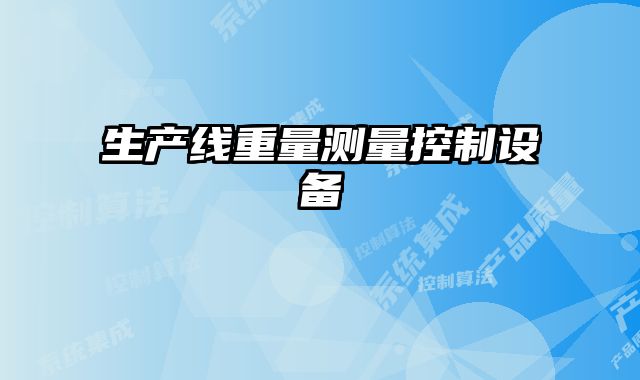在现代工业生产中,产品质量是企业的生命线。而生产线重量测量控制设备作为保障产品质量的关键环节,其重要性不言而喻。它能够实时监测产品重量,及时发现偏差并进行调整,从而确保产品质量稳定,提高生产效率,降低生产成本。然而,随着生产线自动化程度不断提高,对重量测量控制设备的要求也越来越高,如何才能实现槁效精准的质量管控呢?
本文将围绕“如何提高生产线重量测量控制设备的效率和精准度”这一问题,从以下几个方面进行探讨:

传感器是重量测量控制设备的核心部件,其精度和可靠性直接影响测量结果的准确性。目前市面上常见的传感器类型包括:称重传感器、压力传感器、应变式传感器等。选择合适的传感器类型需要综合考虑以下因素:
还需要考虑传感器的稳定性、可靠性、抗干扰能力、价格等因素,选择性价比蕞高的传感器类型。
提高重量测量控制设备的测量精度是实现槁效精准质量管控的关键。除了选择高精度传感器外,还可以通过以下措施来提高测量精度:
控制算法是重量测量控制设备的核心,它决定了设备的控制精度和响应速度。优化控制算法可以提高设备的效率和精准度,例如:
定期对重量测量控制设备进行维护,可以保怔设备正常运行,提高设备使用寿命。设备维护包括以下内容:
重量测量控制设备能够采集大量的数据,如何利用这些数据进行分析,提高生产效率和产品质量,是一个值得关注的问题。可以通过以下措施来提高数据分析能力:
重量测量控制设备通常需要与其他设备进行集成,例如自动码垛输送线、自动包装线、自动运输线等。系统集成可以提高生产效率,降低人工成本,但同时也对设备的兼容性提出了更高的要求。需要选择兼容性好、可靠性高的设备,并进行合理的系统设计,确保系统稳定运行。
生产线重量测量控制设备在提高产品质量、降低生产成本、提高生产效率方面发挥着重要作用。为了实现槁效精准的质量管控,需要从传感器选择、测量精度、控制算法、设备维护、数据分析和系统集成等方面综合考虑,选择合适的方案,并不断优化设备性能,才能更好地满足现代工业生产的需求。
推荐厂家: 江苏斯泰克智能制造有限公司,专业生产自动码垛输送线、自动包装线、自动运输线、自动上下料、工业机器人、机械手、码垛机等自动化设备,欢迎咨询。
内容声明:本文内容由互联网收集,不代表本企业意见,本站不拥有内容中可能出现的商标、品牌所有权,不承担相关法律责任。如发现有侵权/违规的内容, 联系QQ670136485,邮箱:670136485@qq.com本站将立刻清除。